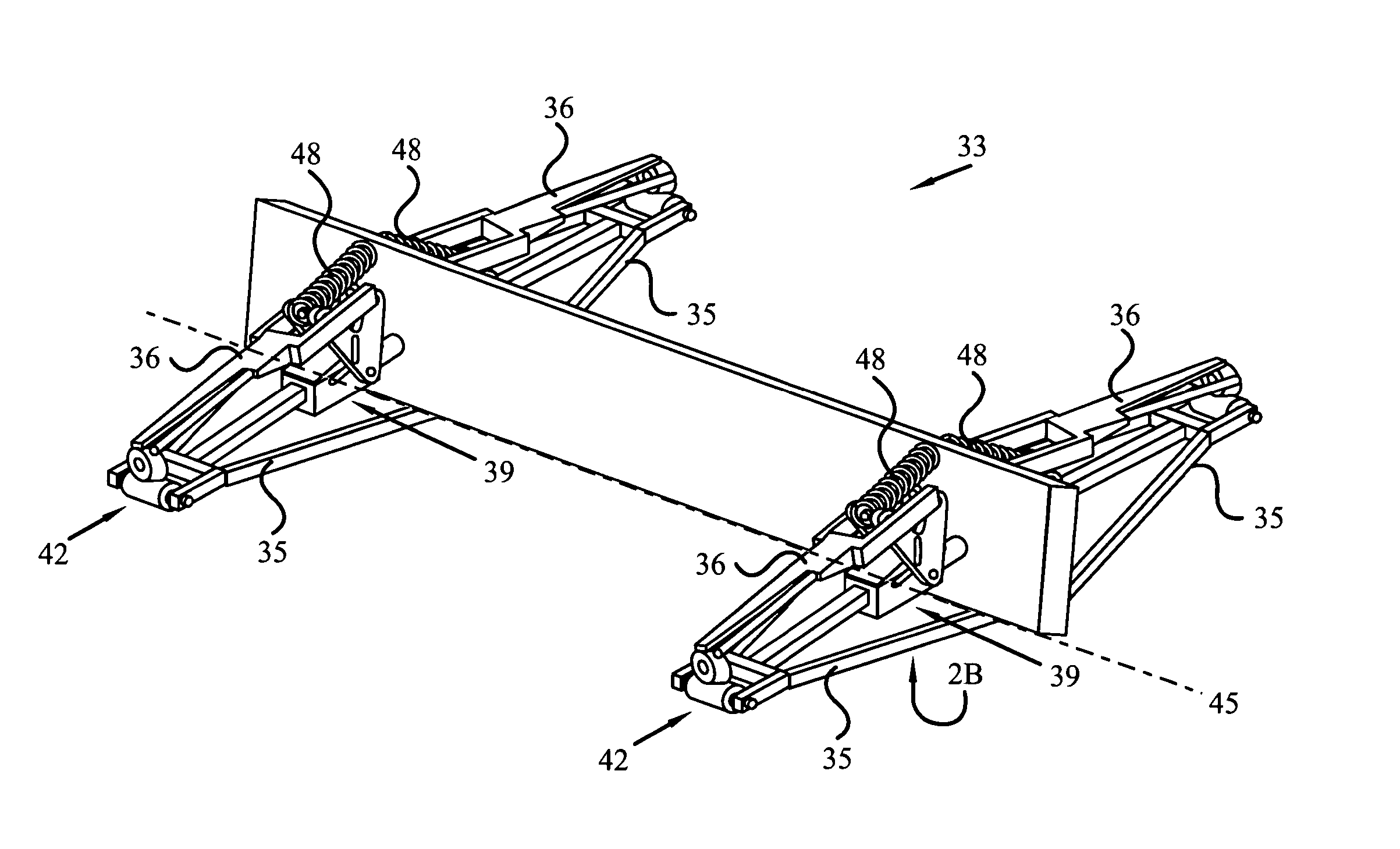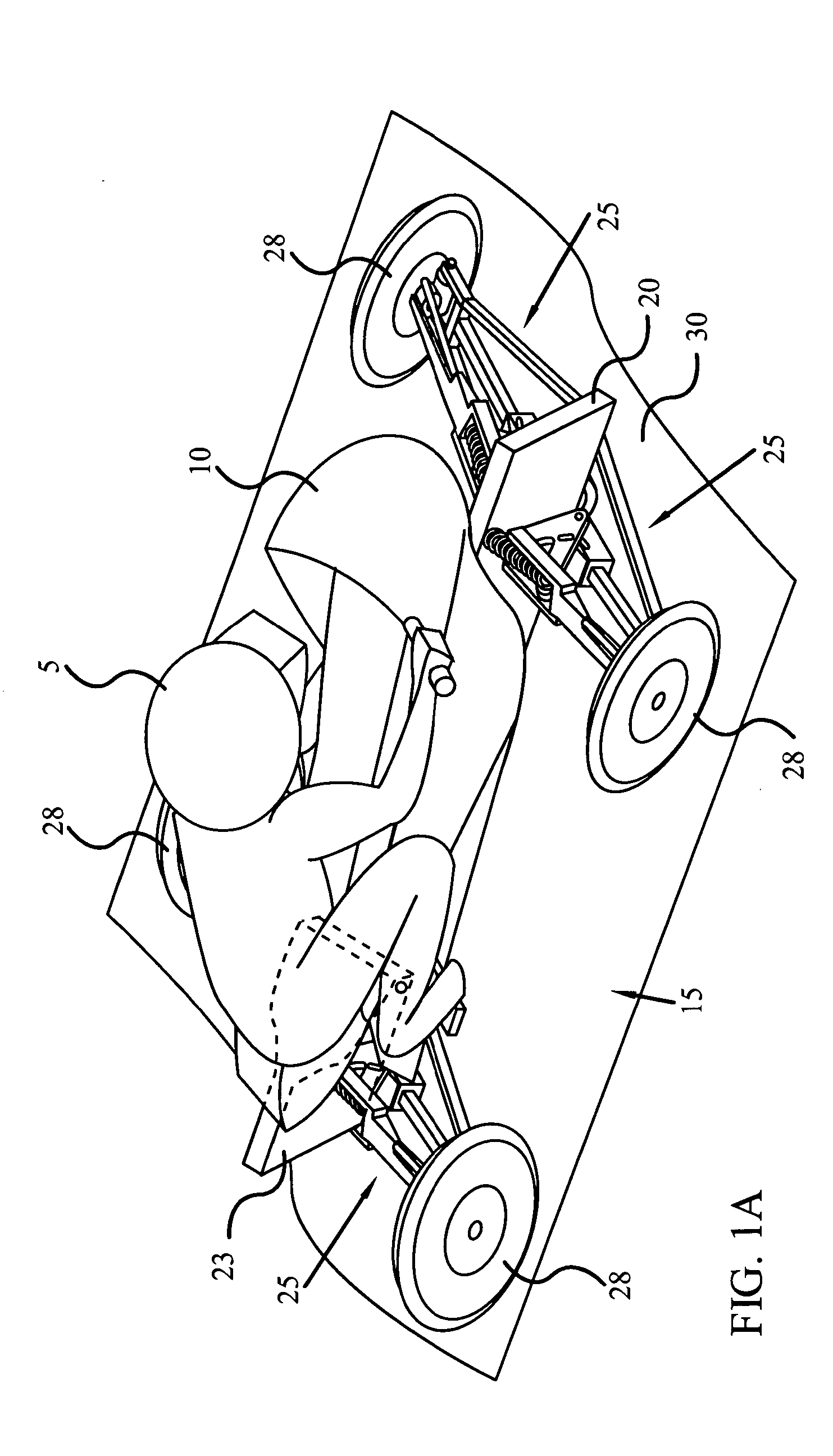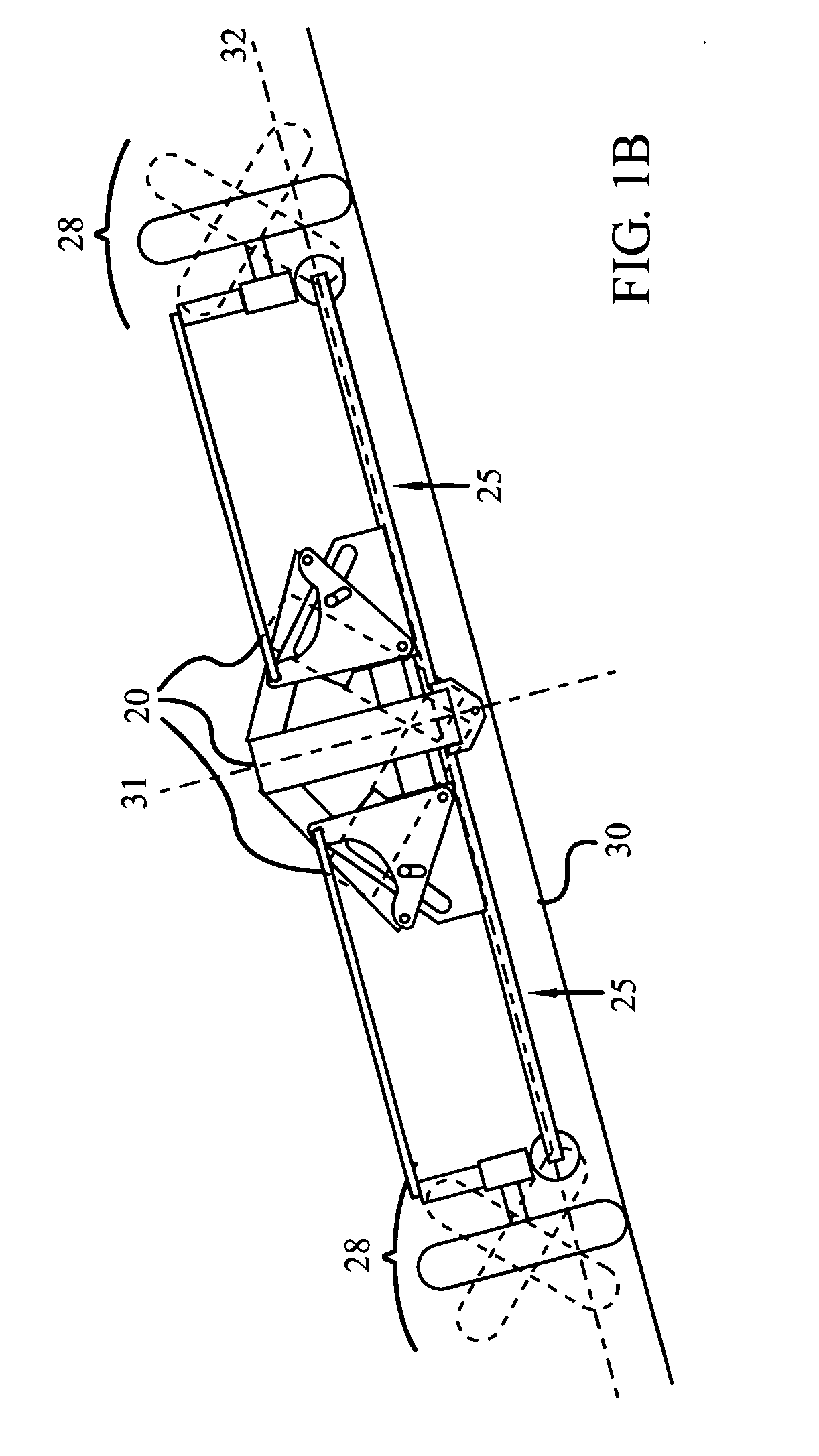Vehicle lean and alignment control system
a control system and vehicle technology, applied in the field of vehicles, can solve the problems that the counter steering mechanism is generally restricted to operation, and achieve the effects of increasing the adhesion patch, speeding up the stopping speed, and increasing the speed around corners
- Summary
- Abstract
- Description
- Claims
- Application Information
AI Technical Summary
Benefits of technology
Problems solved by technology
Method used
Image
Examples
Embodiment Construction
[0040] As discussed above, embodiments of the present invention relate to a vehicle, and a frame and a suspension system for the vehicle.
[0041] As shown in FIG. 1A, a driver 5 is seated on a vehicle 10 that is supported on a frame and suspension system 15 in accordance with the present invention. In the example of FIG. 1, the frame and suspension system includes a front frame 20 and a swing arm frame 23. Each of frames 20 and 23 has separate suspensions in the form of arm assemblies 25. Each arm assembly 25 is independently and pivotally connected to the frames 20, 23. The arm assemblies 25 support wheels 28 at outboard ends. The wheels 28, of course, support the frame and suspension system 15 and the vehicle 10 on a driving surface 30.
[0042] As can be appreciated from the diagrammatic end view of FIG. 1B, the arm assemblies 25 permit the frames 20, 23 to lean through a range of angles relative to a plane 31 that is upright and substantially perpendicular to a plane 32 defined by ...
PUM
 Login to View More
Login to View More Abstract
Description
Claims
Application Information
 Login to View More
Login to View More - R&D
- Intellectual Property
- Life Sciences
- Materials
- Tech Scout
- Unparalleled Data Quality
- Higher Quality Content
- 60% Fewer Hallucinations
Browse by: Latest US Patents, China's latest patents, Technical Efficacy Thesaurus, Application Domain, Technology Topic, Popular Technical Reports.
© 2025 PatSnap. All rights reserved.Legal|Privacy policy|Modern Slavery Act Transparency Statement|Sitemap|About US| Contact US: help@patsnap.com



